Florida red-bellied cooter Description
Species Information:
The Florida Red-Bellied Cooter, Pseudemys f. nelsoni is a subspecies of pond slider, which remains easily obtained and highly sought after for the pet trade. These aquatic turtles are easily cared for if properly educated about there needs and requirements. When baby cooters are viewed, the adjectives that come to mind are usually cute, or precious. Indeed the slider is a beautiful aquatic turtle, with vibrant coloration, and an indispensable volume of character that is different from one specimen to another.
Size and Sexing:
vFlorida red-bellied cooter When grown cooter females can be expected to be significantly larger than males with carapace lengths expected to range from 5-13 inches (12.5-30 cm) when they reach maturity. Males usually have thicker tails, along with longer claws on the front feet. The cloaca on females is closer to the shell, males having a vent more than halfway toward the tail. The plastron (belly side of shell) is more concave with males, and more convex with females. This allows the female to hold more eggs.
Turtles and Salmonella (Salmonellosis):
Florida red-bellied cooter In 1975 the sale of baby turtles halted, due to concerns for spreading infections of Salmonella. This ban has had dire consequences due to the myths surrounding salmonellosis. When properly cared for, baby turtles have no greater risk of salmonella do any other reptile, or bird and one is for more likely to become infected due to salmonella contamination in the food industry. There are approximately 40,000 cases of salmonella treated in the United States every year. Children and the elderly are more likely to become seriously infected. The most common contamination culprits are raw and undercooked eggs, poultry and meat. Many times egg-containing recipes may be hidden sources of the infection. There are a number of easy steps, which can be taken to help reduce the risk of salmonella, as well as other diseases. First, regularly cleaning and sanitizing your turtles habitat and all of its contents.
One must make sure they properly rinse the habitat and furniture to insure that no disinfectant residue is left behind, because it could be fatal to your turtle. Next, invest in a good quality aquarium filtration pump system. This will help in reducing the amount of feces in the water, between complete cleanings. Also, regularly cleaning your turtle and gently brushing its shell with a soft bristle brush, not only keeps your turtle looking cleaner, but may also remove any fecal residue. Care should also be taken when feeding your turtle. Always remove your turtle and feed it in a separate aquatic container. This prevents a build up of uneaten food in its habitat, which raises acid levels and proves unhealthy for your turtle. Finally, the most important step, insure that as with any animal, anyone handling the turtle, its food, or habitat, wash their hands thoroughly when finished. Using the instant hand sanitizes is good in addition to washing. Should these precautions be taken, there should be minimal risk of salmonella.
Longevity:
While there is a definitive difference between turtle and tortoises, both reptiles share certain similar characteristics. One characteristic, which is seen in both turtles and tortoises, is the longevity in which they live. Turtles will live at least for 40 years if given proper care, and species are documented which have lived well over 150 years of age. It is important to make sure that you are willing to make the required investment, if choosing to keep a turtle as a pet. Responsible ownership should also include making sure that your turtle will be cared for, should something happen to you.
Housing:
Baby turtles are easily housed in a standard 10 or 20 gallon aquarium. There are a number of aquariums produced specifically made for reptiles, however, it is important to insure that the aquarium is designed to be filled with water. Male sliders stay small enough to be kept in indoor aquariums, however, females may grow too large to affordable house indoors. At this point an outdoor habitat may be the best option. In an aquarium, a valuable asset is the addition of a filtration pump. This makes regular cleanup easier, however, it should not be used as a replacement of regular cleaning and sanitization. Not only do pumps filter the water, but they also create a more naturalistic environment, with soothing sounds of trickling water. There are a variety of these pumps on the market, many at very economical prices. Even though cooters become quite docile and familiar with handling, it is important to remember that they still remain a wild animal. As with any such animal, it helps reduce stress if the animal is housed in a naturalistic habitat. There are a number of aquarium gravel variations that allow for customization to better match the rest of the simulated environment. Before adding any gravel to an aquarium, make sure it is first sanitized, and then washed. Utilizing a strainer allows one to more easily and effectively rinse the gravel. Anytime anything is added to your turtles habitat, it should be sanitized and washed. Other important features include a basking place. A proper backing place will be place directly under a heat source (preferably with UVB lighting), and it allows your turtle to warm itself completely out of the water. This basking is vital to your turtles health and development. A creative owner will find an endless possibility of options available to continually customize and improve their turtles habitat. A nice feature, specifically made for turtles, is floating basking rocks and logs. These floating basking platforms feature naturalistic design and function. These basking platforms remain on top of the water and rise with added water, or lower with evaporation.
While we live in a day and age of fantastic technologies which treat and purify water for human consumption, the chemicals used in such are not as beneficial to your turtle as they are to yourself. Chlorine and fluorine (fluoride) are present in most public water sources. To eliminate these chemicals, one may use special drops available that neutralize the water of such harmful chemicals and are especially designed for use in aquariums and terrariums. They are economical, as well as easy to use, requiring only a few drops per gallon of water. This is much cheaper overall, than purchasing bottled water. Using these drops in conjunction with a household water purifier, like those found on kitchen faucets, provides a double safe guard against toxins in the water.
Artificial aquarium plants, and decorations may be used, but care should be given that no real plants are used unless they are known to be safe for use in aquariums and with your turtle. Please bear in mind that any plant may be eaten if it seems appetizing to your turtle. Please bear in mind that your turtle enjoys swimming. Therefore it is important that its habitat not be too cluttered, as too interfere with swimming. Also, make sure that there are no danger zones in the habitat which could trap your turtle underwater, thereby drowning it.
Temperatures:
As with all reptiles and cold-blooded animals, temperature regulation is a necessity. There are a number of ways to achieve the desired temperatures and most of them can be used in conjunction with one another to produce the desired effect. Creating a simulated day and night cycle also promotes to better turtle health. Usually a 14 hour day cycle is optimal. During the night time cycle, temperatures may drop provided that approximately 65 degrees Fahrenheit is the nightly low ambient habitat temperature. Day time ambient temperatures in the upper 70s to lower 80s is ideal. The basking lamp should be UVA and UVB light with a basking spot temperature of the mid to upper 80s. In conjunction with your basking lamp it is recommended that you invest in a quality fluorescent lamp which should also emit UVA and UVB light. Not only will this make your turtle more active but will also allow your turtle to make vitamin D3, which is of importance. Adjustable thermostats are available that allow precise control of the aquariums water temperature. They are reasonable in price, and if bought new, have very minimal risk of injury to your turtle. Under tank heat strips or mats provide gradient heat as well. If night time heating is required to keep your turtle above 65 degrees, a ceramic heater may be used.
Feeding:
Your cooter will require a special diet in order to insure proper health. There are a number of commercially available diets, which are made specifically for aquatic turtles, and baby aquatic turtles. The cooter is omnivorous and eats a varied diet. It is important when feeding your turtle to carefully move them into a separate feeding container, which also contains water (halfway as deep as your turtle is tall). This allows your turtle to skim and feed off of the surface of the water, as it has evolved to do. It is important to do so in a separate container, to keep the habitat from becoming too acidic. There are a number of theories about how much a turtle should eat. Obesity can become a problem with all reptiles, and likewise can be fatal with all reptiles. If not fed a premixed diet, meats should make up no more than 35-45% of its diet. A turtle is full when it slows down its feeding response. Some experts claim that a turtle should be allowed to eat for only 10 minutes, while others say 1 hour. This theory is a broad guideline, as each specimen is different. Some animals eat faster than others.
Monitoring the rate at which the turtle is consuming the food is a safer and more practical approach to judging when it has received enough. While commercial turtle foods are the best, and most convenient, some owners prefer to give their turtles more fresh ingredients to comprise their diets. It is important to properly educate yourself in your turtles dietary needs before attempting to regulate their captive diet. Meats and staple protein sources should only be given every 2-3 days. Never feed your turtle raw or uncooked chicken, as this can cause salmonella contamination. Shrimp and krill are packaged for commercially available turtle foods and treats. Various feeder worms, fish, greens, vegetables, and fruits are suitable. Making greens available daily will also provide for healthy turtle habits between protein feedings. Dandelion, romaine lettuce, collard greens, mustard greens, and turnip greens are normally enjoyed by most aquatic turtles.
With proper nutrition aquatic turtles should seldom need supplements. During development, however, aquatic turtle may develop calcium deficiencies. If not prevented this can lead to soft shells, other deformities, and even death. Calcium supplements specifically formulated for the needs of reptiles are available low prices. To administer these supplements, which are in powder form, simply dust the food source in the calcium powder. Do this once to twice a week, and provide the turtle with a secondary calcium source. Turtle will readily chew on cuddle bones, which also are available in most pet retailers. On very rare occasions your turtle may need additional supplement to help it-overcome illness or deficiency. Just as with any other pet, having a good relation with a veterinarian, specializing in herpofauna medicine is advantageous. Not only can a veterinarian assist with medical concerns, but they can also provide answers to questions that you may have regarding captive turtle care.
Outdoor Turtle Pond:
Cooters are frequently purchased as additions to outdoor ponds in landscaped gardens around the world. Turtles, which have outgrown their habitats, may also be introduced into outdoor habitats with success. Having an outdoor turtle habitat has specific concerns that may need to be addressed. If you live in tropical or warm areas, then turtles will not need hibernation. Throughout the southern United States, turtles may be brought indoors in the winter, and they will not hibernate. If left in their outdoor habitat, however, it will be important that you make sure that the pond in which they are living is plenty deep, and contains mud for the turtles to bury themselves into. The pond itself may be constructed any number of ways. Using a livestock water trough, a habitat can be created inside, making sure that the sides are steep enough and high enough that the turtle does not escape. Another method is to construct a more natural pond, with a plastic liner, and using the natural ground surround it to provide a basking place. If this method is used it is important to put up a small fence or barrier around the pond. A partially buried picket fence works well. If your turtle pond is in an area with natural predators or even cats and dogs, make sure that you provide your turtle with as safe of a home as possible. Even with outdoor habitats it is required for you to drain them and clean them regularly. If careful attention is given during construction, then small additions, suck as a drainage system, may make upkeep less of a hassle. With a combination of careful design, landscaping, and integration of imagination with necessity, it is possible to create a stunning outdoor habitat, which will be a joy for you as well as your pet.
Florida red-bellied cooter
Florida red-bellied cooterThe red-bellied cooter is without a doubt one of the most commonly kept pets in the United States and with good reason, its beauty is unrivaled by any other aquatic turtle. With this beauty also comes a wonderful personality, that as the turtle grows will become more and more apparent. It is no wonder that many classrooms across this continent have kept this wonder turtle to teach our growing children about the wonders of nature. As responsible keepers of aquatic turtles it is each and every one of our responsibilities to learn the most we can about them, that we may in turn keep them in optimal health and guarantee that future generations are able to enjoy these magnificent animals. There is a vast volume of information available in the library and online. Through research you may learn more on your own, by keeping a journal of your turtle experiences. This makes a great and rewarding project, which may become an avenue of exploration for future herpetologists and conservationists.
If you have any further questions or need any assistance, for your pet, or your educational foundation, please feel free to contact us.
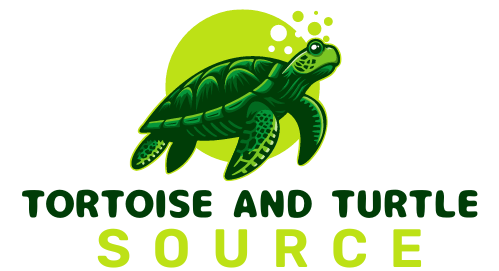
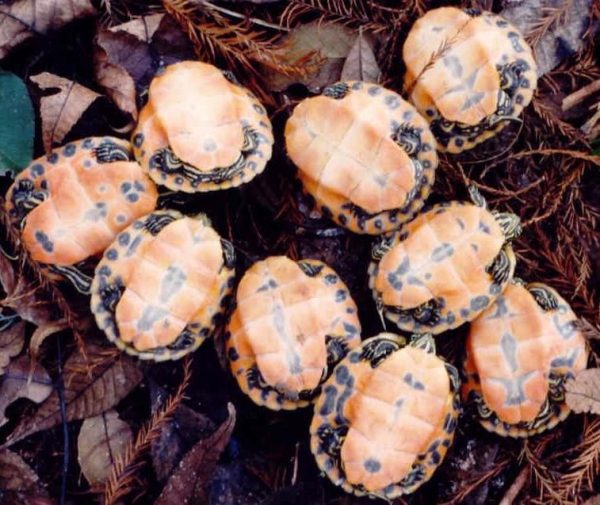
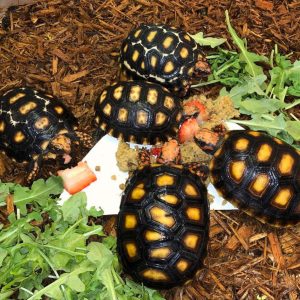
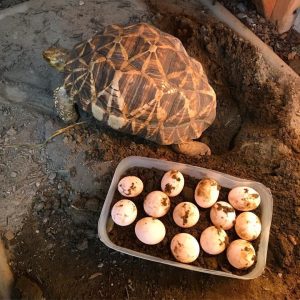
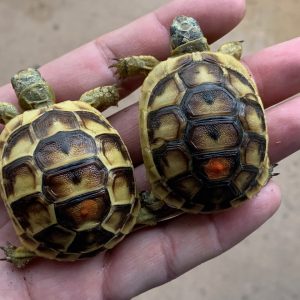
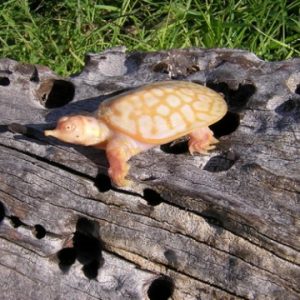
Reviews
There are no reviews yet.